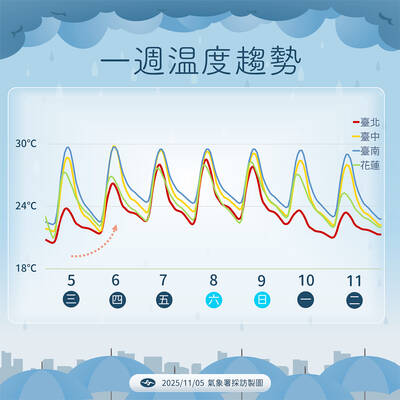The Taiwan Society for the Prevention of Cruelty to Animals (SPCA) on Monday urged the government to follow in the footsteps of China and the international community by banning animal testing for cosmetic products.
While China was the only country that had laws requiring animal testing for cosmetic products, that is no longer true after it lifted the requirement on Monday, Taiwan SPCA executive director Connie Chiang (姜怡如) said.
“This is a major step forward. Taiwan should follow this global trend. Let us distance beauty from cruelty,” she said.

Photo courtesy of Humane Society International
“The EU, Norway, India, Israel and other countries have already passed laws banning cosmetic product testing on rabbits, guinea pigs and other animals,” Chiang said.
“Australia, Brazil, New Zealand and the US have drafted bills prohibiting the sale of cosmetic products associated with animal testing,” she added.
Most Asian countries are moving in the direction of “cruelty-free” cosmetics, she said, adding that India already prohibits animal testing for cosmetic products, and last month imposed a ban on the sale of cosmetics that were tested on animals.

Photo courtesy of People for the Ethical Treatment of Animals
Chiang said Vietnam has banned the “Draize eye test,” a procedure in which drops of cosmetic ingredients are applied to the eyes of rabbits to test their effect.
The biggest progress was in China, which for the first time in 20 years amended its law on mandatory animal tests for cosmetics, she added.
“On the other hand, it is obvious that Taiwan has fallen behind on this worldwide trend,” she said.
In a statement, the Taiwan SPCA took exception to Article 7, Item 1 and Article 16, Item 1 of the Statute for Control of Cosmetic Hygiene (化粧品衛生管理條例), in which the Ministry of Health and Welfare requires that the listing of new chemicals used in cosmetic products must include technical specifications of the ingredients’ material properties.
That requirement necessitates the use of nonclinical trials for safety analysis, Chiang said.
“The nonclinical trials refer to animal testing, and these have led to companies conducting experiments on animals when they develop new products or add new chemical ingredients,” Chiang said.
“Lab workers drip chemicals into the eyes of rabbits and other animals, or apply chemicals via ointments to the animal’s shaven bare skin,” she said.
“At times, they even force-feed these animals with high doses of drugs or chemicals, which in some cases kill them,” she said.
“Scientists have in recent years proven that most forms of animal testing are unnecessary. They have shown their shortcomings in terms of accuracy of results, given that humans and animals have very different physiological reactions to various chemicals,” Chiang said.
The Taiwan SPCA said that many alternative methods to animal testing have been developed in recent years, and all of them have passed verification by the scientific community using the most rigorous international standards.
“There are more than 1,000 ingredients that have been verified as safe for human use. Compared with animal testing, [these methods] provide a faster, less costly, more humane and more reliable assessment of cosmetic product safety,” Chiang added.

UNILATERAL MOVES: Officials have raised concerns that Beijing could try to exert economic control over Kinmen in a key development plan next year The Civil Aviation Administration (CAA) yesterday said that China has so far failed to provide any information about a new airport expected to open next year that is less than 10km from a Taiwanese airport, raising flight safety concerns. Xiamen Xiangan International Airport is only about 3km at its closest point from the islands in Kinmen County — the scene of on-off fighting during the Cold War — and construction work can be seen and heard clearly from the Taiwan side. In a written statement sent to Reuters, the CAA said that airports close to each other need detailed advanced

Tropical Storm Fung-Wong would likely strengthen into a typhoon later today as it continues moving westward across the Pacific before heading in Taiwan’s direction next week, the Central Weather Administration (CWA) said. As of 8am, Fung-Wong was about 2,190km east-southeast of Cape Oluanpi (鵝鑾鼻), Taiwan’s southernmost point, moving westward at 25kph and possibly accelerating to 31kph, CWA data showed. The tropical storm is currently over waters east of the Philippines and still far from Taiwan, CWA forecaster Tseng Chao-cheng (曾昭誠) said, adding that it could likely strengthen into a typhoon later in the day. It is forecast to reach the South China Sea

WEATHER Typhoon forming: CWA A tropical depression is expected to form into a typhoon as early as today, the Central Weather Administration (CWA) said yesterday, adding that the storm’s path remains uncertain. Before the weekend, it would move toward the Philippines, the agency said. Some time around Monday next week, it might reach a turning point, either veering north toward waters east of Taiwan or continuing westward across the Philippines, the CWA said. Meanwhile, the eye of Typhoon Kalmaegi was 1,310km south-southeast of Oluanpi (鵝鑾鼻), Taiwan’s southernmost point, as of 2am yesterday, it said. The storm is forecast to move through central

UNKNOWN TRAJECTORY: The storm could move in four possible directions, with the fourth option considered the most threatening to Taiwan, meteorologist Lin De-en said A soon-to-be-formed tropical storm east of the Philippines could begin affecting Taiwan on Wednesday next week, the Central Weather Administration (CWA) said yesterday. The storm, to be named Fung-wong (鳳凰), is forecast to approach Taiwan on Tuesday next week and could begin affecting the weather in Taiwan on Wednesday, CWA forecaster Huang En-hung (黃恩鴻) said, adding that its impact might be amplified by the combined effect with the northeast monsoon. As of 2pm yesterday, the system’s center was 2,800km southeast of Oluanbi (鵝鑾鼻). It was moving northwest at 18kph. Meteorologist Lin De-en (林得恩) on Facebook yesterday wrote that the would-be storm is surrounded by